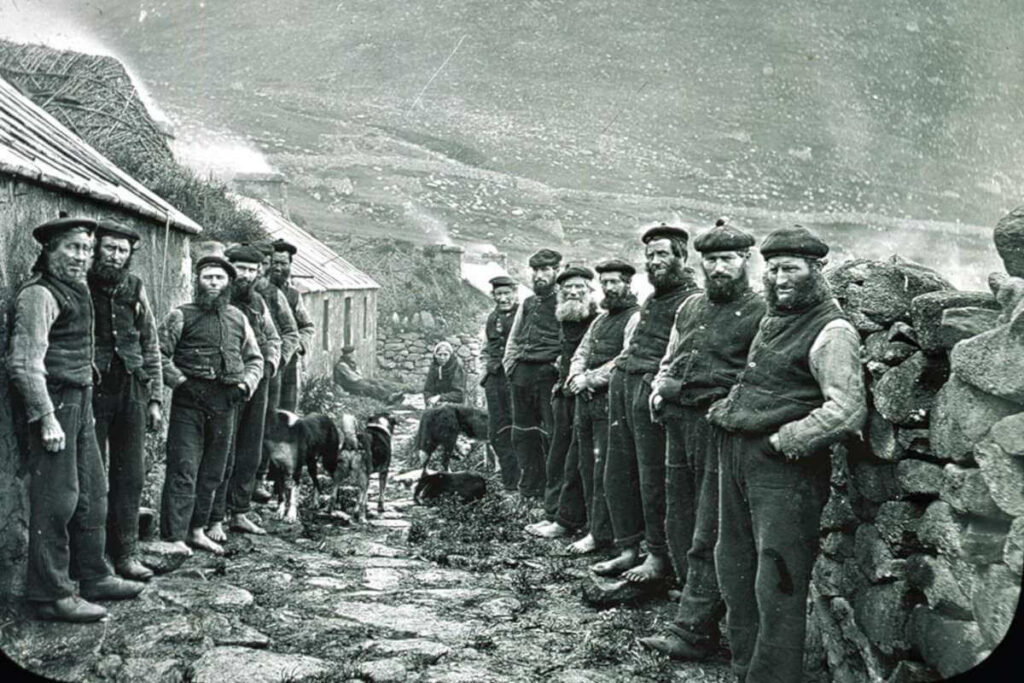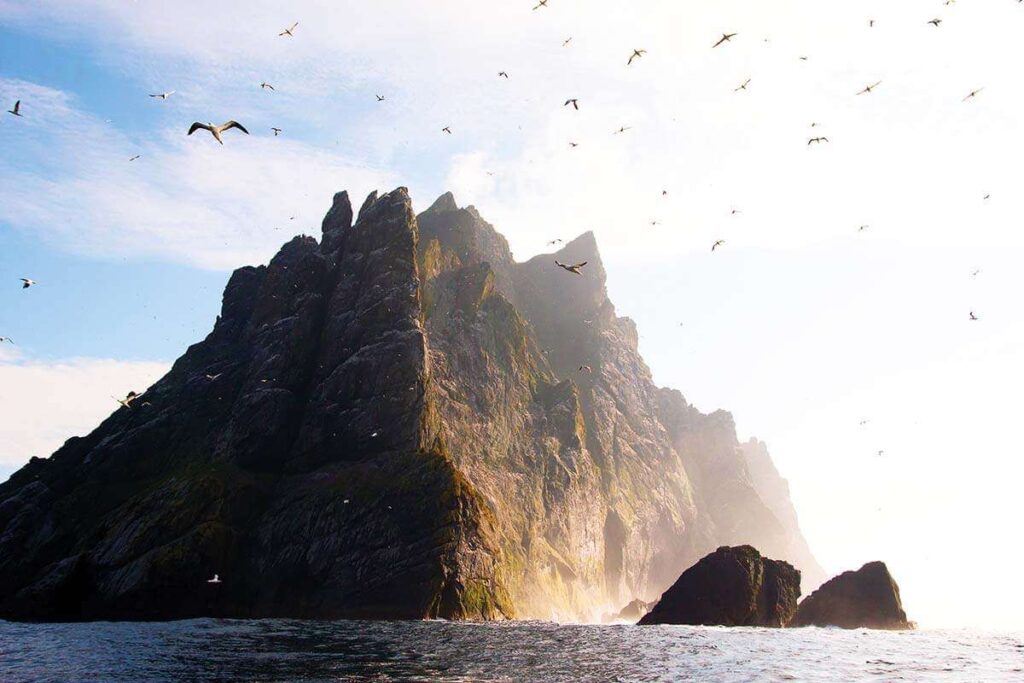
On August 29, 1930, 36 people abandoned the only home they’d ever known and moved to a far-off place: the Scottish mainland. Their community on the island of St. Kilda, the most remote place in all of the United Kingdom, had suffered from years of disease, desertion, and famine. By all accounts, the move was completely voluntary, as most residents signed a petition to leave before winter. But even if it was a necessary decision, the resident still had a strong and emotional response. One account described the intensity of the evacuation: “As the familiar outline of the island grew faint, the severing of an ancient tie became a reality and the St Kildans gave way to tears.”
Many stories have been written about the emotional evacuation of St. Kilda. But one question that’s rarely asked is, “Why did the St Kildans stay on the island for so long in the first place?” A community of only 36 people, including just thirteen men, surely considered leaving before it got to that point. This begs the question: What motivates people to live on an isolated island far removed from the rest of society?
Place is a powerful force in our lives. It’s far more than the location we happen to inhabit. It’s the ties that bind us together, the knowledge we pass down, the stories we share, and even the ones we don’t. Our places create a shared sense of belonging, a reason for living that extends beyond family or community. To an outsider, St. Kilda may seem like a small outpost, one best left to the birds. But to a native St Kildan, the island must have seemed like an entire world, full of wonder and opportunity.

Present Day Threats
Fast forward nearly 95 years to January 2025. Storm Éowyn barrels down on Northern Ireland and Scotland, shattering existing records with wind gusts of up to 114 miles per hour. It was the strongest storm in over a decade, causing millions in damages and destroying thousands of acres of parkland across Scotland and Ireland.
Vulnerability to increasing storm impacts is nothing new to St. Kilda. A recent climate report found that this UNESCO World Heritage site faces grave threats from intensifying storms like Éowyn. These events accelerate erosion along the shoreline, while powerful winds can seriously damage historic structures like the cleits—makeshift huts once used to store wild game. Add rising sea levels, which increase flooding and disrupt habitat for local seabirds, and the island faces drastic transformation in the coming decades.
The full impact of Storm Éowyn on St. Kilda remains unclear. What is certain is that the island’s future hangs in the balance due to ongoing climate change impacts. Today, St. Kilda is only occupied by passing tourists and workers from the National Trust for Scotland, who work to maintain and preserve the island and its cultural sites. Yet we all risk losing much more than just these physical structures.
St. Kilda stands as a testament to humanity’s remarkable ability to adapt to harsh environments—not merely surviving, but creating something extraordinary out of seemingly impossible conditions. The story of St. Kilda reminds us of our deep-seated desire to connect with and make meaning from the places we inhabit. While the community itself no longer exists, their legacy and the memories embedded in the landscape will continue to resonate, even against the strongest of storms.
You can learn more about the future of St. Kilda from the full climate vulnerability index report. The National Trust for Scotland welcomes donations, which support their ongoing conservation and repair efforts on the island.

Leave a Reply